Experimental tank AMX-30 ACRA (France)
Anti-Char Rapide Autopropulsé (“Anti-tank self-propelled high-speed [weapons]) program launched in 1961 year. Atelier de construction de Puteaux (APX) was appointed the lead contractor. Ten years after starting work, the project was transferred to Groupement Industriel des Armements Terrestres (GIAT, now Nexter). The aim of the work was to create a promising anti-tank guided missile, the carrier of which could be existing and prospective tanks or other equipment. In connection with the recent successes of the American gunsmiths, the requirements for the French project implied the creation of a rocket launched through the barrel of the corresponding weapon.
For a long time, the organization-developer has been studying the existing possibilities and shaping the appearance of promising technology. In a sense, the new project was experimental, because of which it was decided to use some of the existing components. So, a new tank carrier promising missiles had to be a modified version of one of the machines in service. As part of the development and testing program, this allowed for savings on the construction of experimental equipment, and after the possible adoption of the missile complex for service, it was possible to expand the mass production of “missile tanks” as soon as possible.
As a basis for a tank with rocket and artillery weapons Serial AMX-30 was selected. This main tank was created in the mid-sixties and by the time of completion of some work on the project ACRA managed to go into a series. The prototype of a tank with a combined armament planned for construction was designated AMX-30 ACRA, which stipulated its membership in the development program of the guided missile.
In the basic configuration, the main tank AMX-30 was a classic-style armored vehicle with a central combat compartment, equipped with a swivel turret, and aft engine compartment. The hull and tower were made of steel rolled armor of various thickness. Homogeneous frontal hull parts had a thickness of up to 80 mm, the turret protection was provided with similar armor, although there was an 150-mm gun mask. The hull and turret sides had a thickness of 30-35 mm, the stern and roof were up to 25 mm.
The tank was equipped with a Hispano-Suiza HS-110 engine with an 680 horsepower. Using mechanical or hydro-mechanical transmission with manual or semi-automatic control (depending on the modification of the tank), the engine torque was transmitted to the driving wheels of the aft layout. The AMX-30 had five support rollers of average diameter on each side. Used individual torsion suspension. In front of the hull were guide wheels, in the stern - leading. There were several supporting rollers.
The main weapon of the tank in the base version was an 105-mm rifled F1 gun mounted in the turret. In one installation with a gun mounted twin heavy machine gun. The roof of the tower had attachments for installing the 7,62-mm anti-aircraft machine gun. Ammunition armored vehicles consisted of 50 shells for the gun, 748 ammunition 12,7x99 mm and 2050 ammunition for machine gun rifle caliber.
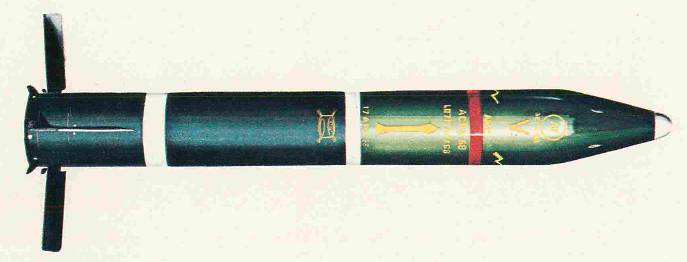
General view of the ACRA rocket in flight configuration. Photo by Aw.my.com
The tank was driven by a crew of four. In front of the case with a shift to the left was a driver. In the tower were the commander, gunner and loader. The F1 gun was not equipped with automatic ammunition systems, which is why the sending of shots into the chamber was the task of an individual crew member. For access to their seats, the crew had to use several hatches in the roof of the hull and the tower.
The project AMX-30 ACRA meant the preservation of the mass of the existing units of the serial tank, at the same time proposing the use of some new parts and devices. Without any changes remained the body, power plant and chassis. The dome of the tower was also borrowed from the existing project, but in connection with the planned rearmament, it should have received a number of new units. As a result, the “missile” and conventional tanks turned out to be similar in appearance, but there were some noticeable differences.
During the modernization of the new project, the base tank lost its existing gun mount, instead of which it was necessary to mount similar units of a new type. The existing 105-mm gun with a twin machine gun was removed from the turret. Also removed the existing gun mask. On the site of the old weapons it was proposed to mount a new type of gun-launcher with accompanying units, which led to a noticeable change in the exterior of the machine.
For example, the presence of larger recoil devices and the use of some additional equipment led to the need to develop a new mask of a different form. In front of the frontal leaf of the turret, there was now a unit with an expanding rear part and several openings in the front wall: one of them was intended for outputting the gun barrel, the others for the rocket control equipment. Optics lenses closed with movable covers.

A snapshot of the rocket from the project documentation. Photo Defense-and-freedom.blogspot.com.br
The main weapon of the AMX-30 ACRA tank was a promising weapon-launcher caliber 142 mm. The reasons for choosing such an unusual caliber are not known for certain. It should be noted that the 142-mm artillery system was present only in one project of French armored vehicles. The only carrier of such weapons was the armored engineering vehicle AMX-30 EBG, whose task was to fire at enemy targets with special unguided rocket projectiles. Apparently, the caliber 142 mm at the time was a compromise between the high performance of the rocket and the possibility of its production using existing technologies.
A new type of gun received a rifled barrel of medium length. To compensate for the increased recoil momentum, the barrel received a muzzle brake of a characteristic shape. Directly on the muzzle of the barrel were placed two wide plates connected to a vertical part with a hole for the passage of the projectile. The latter was also fastened to the barrel with the help of small lateral horizontal plates. Such a muzzle brake had to ensure the removal of powder gases back and to the sides, reducing the recoil force acting on the tank.
The cannon-launcher of the new model was designed to use a promising guided missile type ACRA and a new high-explosive fragmentation projectile. It was proposed to attack the enemy’s armored vehicles with missiles, while the infantry and fortifications could be destroyed by an 142-mm active-missile projectile. The high-explosive shot was a product with a total length of 90 cm and a mass of 21 kg. The projectile itself accounted for 64 cm of length and 15 kg of weight with 2 kg of explosive. The projectile also had an aerodynamic stabilizer with six planes. According to calculations, such a projectile could fly to a distance of up to 8 km, however, the insufficient length of the barrel did not allow it to accelerate to the required speeds. The initial velocity of the ammunition was only 550 m / s. Through the use of its own engine, the projectile was able to accelerate to 700 m / s.
It should be noted that the original high-explosive fragmentation projectile was only an additional weapon of a promising tank: the guided missile Anti-Char Rapide Autopropulsé was to be the main means of attacking targets. By the time of the start of work on the ACRA project, French specialists had gained some experience in creating compact rocket systems. The existing knowledge and developments were planned to be used in the newest project.
Under the ACRA program, a new rocket was created. She received a cylindrical body with a diameter of 142 mm and a length of 1,22 m. The starting weight was 26 kg. The head compartment of the rocket contained a cumulative warhead with a charge in the form of 2 kg of hexogen. The power of such a warhead allowed punching up to 380 mm of homogeneous armor. In the central compartment of the hull was placed a solid-fuel engine, the nozzle of which was displayed on the tail end. When the rocket emerged from the barrel, the engine accelerated it to 150 m / s. On the flight, the engine gave speed up to 500-550 m / s. The tail section was set aside for the installation of control devices and eight planes of 438 mm spread in flight, equipped with steering machines. At the tail end of the rocket, there were four lenses for receiving the radiation of the guidance system. The maximum range of the missile was determined in 3,3 km.
In the search for suitable control systems, the authors of the ACRA project considered several variants of such equipment. Based on the results of evaluating several systems, it was decided to use the control with a beam of light directed towards the target. The radiation source was supposed to be a xenon lamp. In the future, this proposal was developed, as a result of which a laser guidance system with flight “along the beam” was chosen. The main element of the control complex was a Nd: YAG type laser with an active medium in the form of an aluminum-yttrium garnet doped with neodymium ions. The 40 W laser should have been located inside the mask of the gun, its lens was covered with a sliding cover. By holding the laser at the target with the help of standard aiming devices and existing weapon guidance drives, the gunner or tank commander could control the missile flight until it hit. The rocket monitored the laser beam and independently determined its deviation from the required direction, returning to the desired trajectory.
When reworking a new project, the AMX-30 tank should have been deprived of the existing gun mount with the 105-mm cannon and the 12,7-mm coaxial machine gun. Because of this, additional weapons experimental tank AMX-30 ACRA was to consist of only one anti-aircraft gun. Probably, in the future, the project could be finalized with the introduction of new weapons, but until the end of the work, an experienced tank of a new type did not receive a second machine gun.
The project Anti-Char Rapide Autopropulsé French industry had to spend a large amount of various studies and develop a whole new range of products of different classes and types. Because of this, work on the program took a lot of time: to begin construction of an experimental armored car was only in the early seventies. In addition, the complexity of the work affected the duration of the subsequent tests.
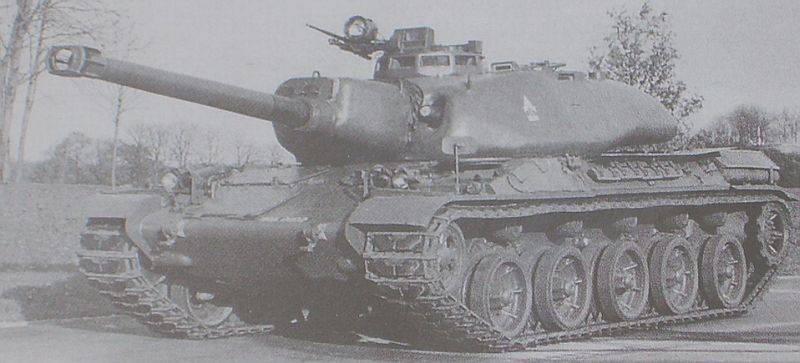
Experienced tank AMX-30 ACRA during the test. Photo Maquetland.com
In the 1970 year, the organization APX, which played the role of the lead developer, with the participation of several related enterprises completed the re-equipment of one of the serial main tanks of the required model. Transmitted to rework armored AMX-30 lost some units, which are installed in place of new products. In this form, the tank, which received the additional designation ACRA, soon entered the field testing. For obvious reasons, the inspections focused on the combat qualities of the vehicle. The parameters of mobility, for obvious reasons, were not very interested in the customer, because of which their definition was not the main task of the tests.
During tests in the conditions of the landfill, an experienced AMX-30 ACRA tank showed the preservation of the existing mobility characteristics. The absence of significant changes in mass and the preservation of the existing engine made it possible to keep the mobility at the same level.
Of greatest interest were the fighting qualities of the updated car. An experienced “rocket tank” confirmed the possibility of attacking various targets with the help of an active-reactive high-explosive fragmentation projectile or a guided anti-tank missile. When using unguided ammunition, the maximum range of the shot reached 8 km, the rocket flew on 3,3 km, as expected during the development of the project. The flight of the rocket to the maximum range lasted only 7 seconds. A trained crew could make up to four shots per minute. The characteristics of the power of the ammunition were confirmed: the high-explosive projectile successfully destroyed targets, and the warhead of the rocket pierced very thick armor.
Nevertheless, as always happens when creating new bold projects, it was not without problems. First of all, the high cost of the ACRA rocket was the reason for the claims. Due to the complexity of the work one pilot batch of the product produced in the early seventies, it was worth about 1 million French francs. Nevertheless, up to a certain time they put up with such a minus of the project. In the interests of the test program in the first half of the seventies, about 500 rockets were manufactured, almost all of them were expended.
Another problem of the complex was not the most successful control system. The missile guidance laser was suggested to be rigidly mounted on a gun mount, which led to unexpected consequences. To hit the target, the AMX-30 ACRA tank had to stop, find the target and aim the weapon at it, then send the missile into flight. Until the rocket hit the target, the carrier tank had no opportunity to budge: otherwise the laser beam deviated from the target, disrupting the attack. Thus, during the attack, the “rocket tank” had to remain in one place without movement for at least 5-10 s. One should hardly have expected that the enemy’s tanks would not take advantage of this and would not shoot at the fixed armored vehicle.
Another drawback of the ACRA project was its unacceptably short list of possible carriers of such weapons. In the early stages of development, it was assumed that the new type of missile would be used both by armored vehicles and helicopters. However, by the time the tests began, it became clear that the ACRA product would not be able to enter the front-line weapons range aviation. Such a feature of the project in the future could lead to an increase in the cost of purchasing the required weapons.
In the present form of the tank design combined with AMX-30 ACRA missile and artillery weapons I had a lot of problems. Some of these shortcomings were supposed to be eliminated in the new project of the AMX-10M ACRA self-propelled artillery, developed in the 1971 year. From a certain time within the program several prototypes of armored vehicles were tested.
The basic tests of several cars continued until 1971-72, after which a decision was made about the future of the program. Due to the shortcomings of mass and the minimum amount of the positive features of the military decided not to participate in the program Anti-Char Rapide Autopropulsé. Guided missile of a new type that runs through the barrel of special tools, lost the chance to become the standard weapons of armored combat units.
Nevertheless, the developers decided not to stop the work and continue testing. Before 1974, the company GIAT and several related enterprises, without the support of the military department, carried out various works and tests, which revealed the strengths and weaknesses of the technology. Taking into account the information received, improvements were made to various elements of the project. Testing and refinement of several prototypes of the two models of technology continued until the end of 1974. During this time, about five hundred guided missiles and a significant number of high-explosive fragmentation projectiles were used.
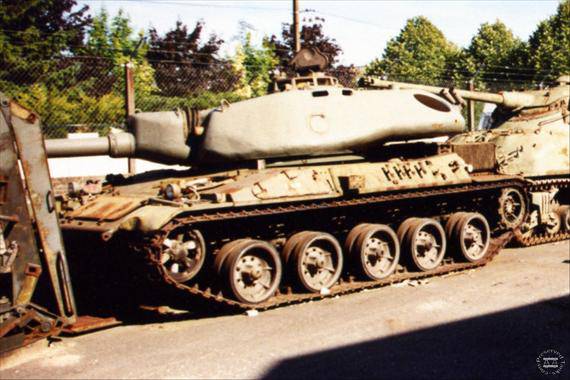
Tank AMX-30 ACRA in the "vaults" of the museum in Saumur. Photo Preservedtanks.com
Perhaps the work on the ACRA project could go on and on, but by the beginning of 1975, even the most ardent supporters of this development had lost all hope for the successful completion of the program, which was once considered promising and promising. By this time, France and Germany jointly completed the development of a promising anti-tank missile complex HOT, suitable for mounting on various self-propelled chassis. According to its characteristics, the new complex should have surpassed the ACRA system being tested, because of which the real prospects of the latter became clear.
Due to the further development of missile weapons, the ACRA project has lost its future. The latest test launches of such missiles from the guns of the AMX-30 ACRA tank and AMX-10M ACRA self-propelled guns took place at the end of the 1974 year. After that, all work on the program was terminated due to the lack of prospects. Companies participating in the project Anti-Char Rapide Autopropulsé, engaged in new relevant developments.
The only experimental pilot “missile tank” AMX-30 ACRA was no longer needed. It was decided not to rebuild the original project with the return of regular weapons. For some time, the prototype remained at the manufacturer, after which he was transferred to the museum of armored vehicles in the city of Saumur. The prototype remained in the “vaults” of the museum, at least until 1997. A few famous photos of the car, made in the past, show that it is not in the best condition. Perhaps unique example of armored vehicles in the future will take place restoration and will join the museum's permanent exhibition, but now it is on one of the storage areas.
As it turned out in the future, the Anti-Char Rapide Autopropulsé / ACRA project was the first and last attempt by the French industry to develop an anti-tank missile launched through the barrel of a special tank gun. In the future, the development of tank guns and anti-tank missiles went in parallel and did not overlap in any projects. As a result, modern French tanks AMX-56 Leclerc can use only 120-mm projectiles of various types, but do not have the ability to use guided missiles. Armored vehicles of other types became carriers of anti-tank missile systems.
On the materials of the sites:
http://chars-francais.net/
http://tanks-encyclopedia.com/
http://secretprojects.co.uk/
http://strangernn.livejournal.com/
http://defense-and-freedom.blogspot.com.br/
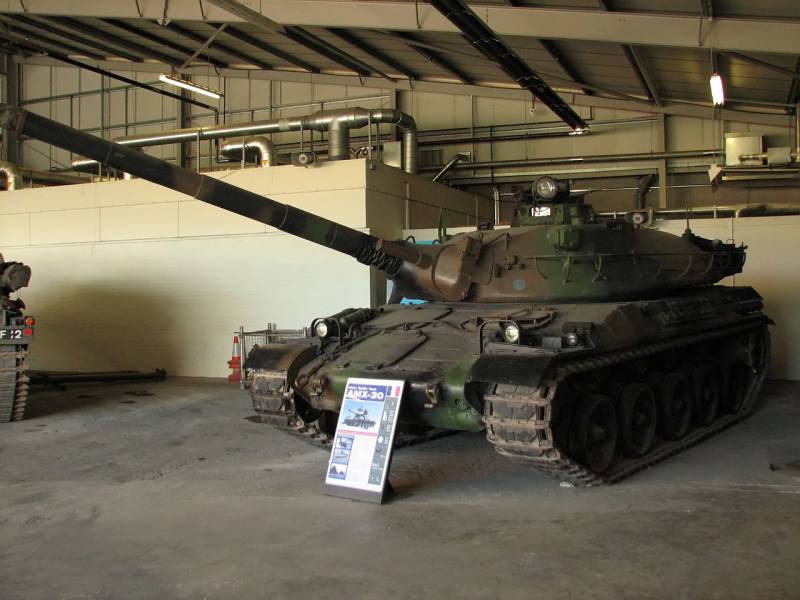
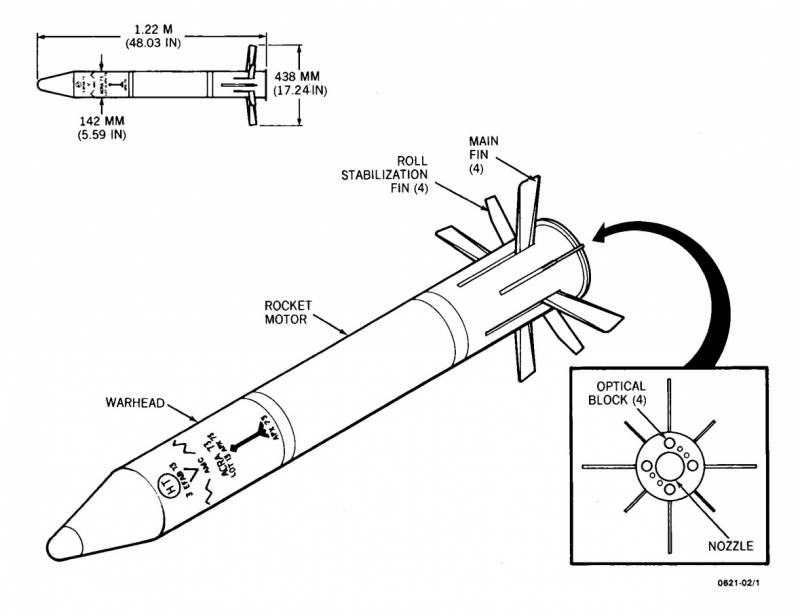
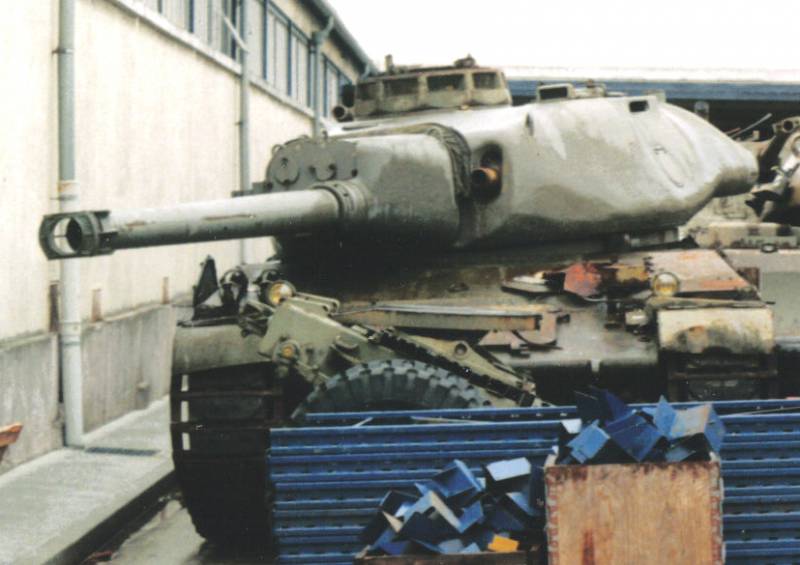
Information